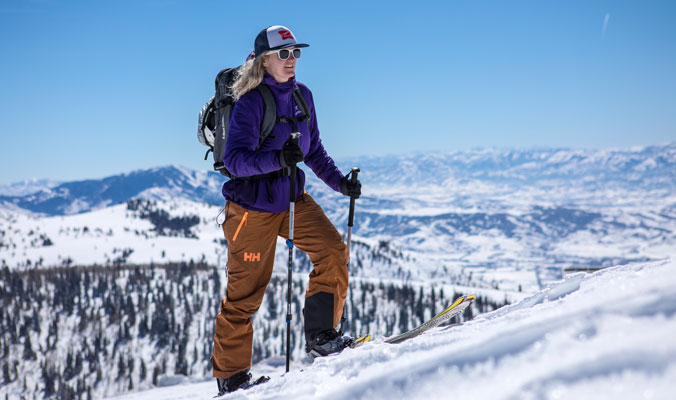[This article is part of our week of climate change coverage, through which we hope to build awareness, dialogue and action around the topic as our alpine communities become increasingly impacted.]

The Circular Economy: whether it’s the latest buzzword in sustainability or a term here to stay, its concepts are important in reducing our impacts to an amount the earth can sustain.
A circular economy is an industrial system that is restorative and regenerative by design. Renewable energy is used, materials are sustainably sourced, and there is no pollution. Traditionally, we have made our ski equipment from unsustainable materials, using non-renewable energy and disposing in landfills when we’re done. This linear economy (using virgin materials to make products that end up in landfills) is inefficient. A circular economy maximizes efficiencies and eliminates waste by keeping products in use as long as possible (through repair) and reusing materials to the greatest extent viable.
Unless we decide to make a cool ski fence or snowboard bench from old equipment, we need to create solutions where products are reused or repurposed at the end of their life. About three million skis and a million snowboards are sold annually. If a company sells X pairs of skis per year, it needs to have an end-of-life plan for X pairs of skis per year, incorporating disassembly and recyclability into product design. Niche Snowboards, for example, sells snowboards specifically designed for recyclability and is establishing a take-back program to collect snowboards for recycling.
There are a few ways that brands can begin to transition to a circular economy. Life-cycle assessments can determine the environmental impacts of a product’s life and identify priority areas in which to take action. Brands can consider swapping out high-impact materials with those of a lower impact—in skis and snowboards, that looks like using basalt and wood instead of fiberglass; bio-epoxies and bio-plastics instead of petro-chemicals; and, most importantly, the use of more recycled materials. Edges can be constructed from recycled steel, and sidewalls can be created from recycled ABS plastic.
Beyond hardgoods, apparel is making its own strides. Fjällräven’s Re-Wool products use recycled wool collected from leftover yarn and wool from factories. Unifi Textiles supplies Polartec, Patagonia, The North Face, prAna and many more with polyester derived from more than 10 billion plastic bottles to date.
Reducing impacts while maintaining quality and managing costs is a great challenge but has enormous opportunities. Innovation is key, involving new ways of thinking and doing business. Partnerships are important, because solving these problems isn’t possible alone. The efficiencies that become possible with circularity in the consumer goods sector could bring cost savings of $700 billion per year and increase business resiliency.
As consumers, we can influence companies’ responses to the urgency of crises we face. Let’s let our favorite brands know the time is now to make big changes and invest in renewables, reduce packaging, offer more opportunities for product repair and design products for recyclability.
And on an individual level, instead of replacing that worn down hoody, let’s try to patch the holes.
Marca Hagenstad is an economist with Circle Economics and a contributing author to the forthcoming Intergovernmental Panel on Climate Change report on the cryosphere. She tests splitboards for Backcountry Magazine and teaches snow science with Winter Wildlands Alliance.










Related posts: